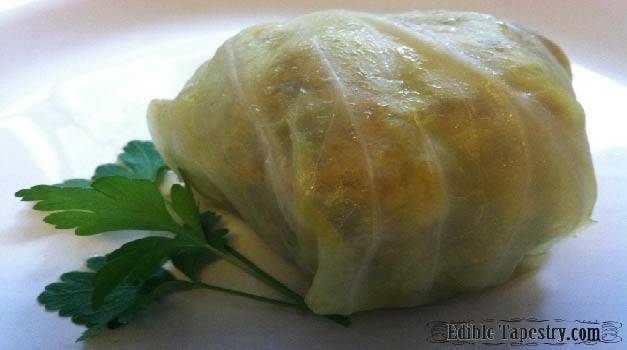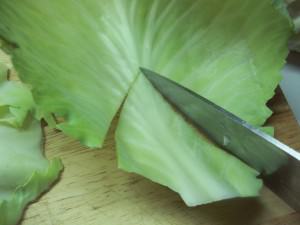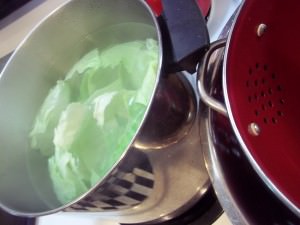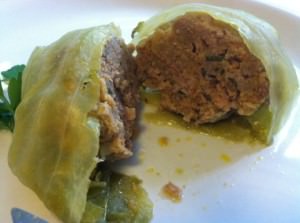Meeting with your book club this month to discuss THE GIRL YOU LEFT BEHIND? Try making this amazing dish inspired by the novel.
Chou Farci
It’s sausage meat, some vegetables and herbs, wrapped in cabbage leaves and poached in stock.”
When Sophie asks the Kommandant in The Girl You Left Behind if there are any dishes he would prefer her to cook, he answers that the meal she served to him and his men that same evening is one they would enjoy having again in the near future. She describes to him how she prepares the meal that is called Chou Farci.”
I was so inspired by her explanation that I wanted to find out what was so special about this take on the ordinary beef and rice stuffed cabbage, baked in tomato sauce, that I’d grown up eating. I decided it would be the perfect October She Reads dish, and imagined ladies carrying towel wrapped Crock Pot liners of steaming stuffed cabbage parcels to their book club meetings to discuss Jo Jo Moyes’ First World War novel.
The first thing I thought of when buying my ingredients, the pork sausage, in particular, was the baby that Sophie was holding wrapped in a blanket on her first meeting with the new Kommandant assigned to her village. Just as she worried about his reaction to the baby in her arms, had he taken a closer look, I was concerned that the types of sausage available to me wouldn’t be appropriate for the traditional French stuffed cabbage dish that the German officer was so fond of. And “some vegetables and herbs” was a vague enough description to keep me chewing my lip, hoping I’d be able to pull it off.
I decided to stick with ingredients that would have been readily available to Sophie in her wartime, French farm village. Just what would have been in those crates the Kommandant had delivered to the inn? Contaminant-free, freshly baked, crusty bread from the village baker, carrots, onions, and basic herbs, such as parsley and sage. I added one of my farm fresh eggs to the list to make sure my cabbage bundles would hold together while they poached. The butcher at my favorite meat market directed me to his most mild, basic links and I was on my way.
Ingredients:
1 lb. mild sausage. Mine was of the Italian variety, but very basic. You could even use mild breakfast sausage, if you like.
2 c. bread crumbs
1/4 c. finely grated carrot
1/4 c. sliced green onions
2 T chopped, fresh parsley
1 tsp. minced sage
1/2 tsp. salt. You may want to cook a little of the filling without salt to taste it. Your sausage may be salty enough.
1/4 tsp. pepper
1 egg
6 to 8 cabbage leaves
3 to 4 cups stock
Method:
Gently coax 6 to 8 leaves from a head of cabbage by cutting each at the stem.
Cut the hard vein from the base of each leaf in a “V” shape so that the leaf will fold over the sausage stuffing easily.
Bring a stock pot of water to boil. Blanch the leaves until softened, 3 to 4 minutes.
Remove from the heat and thrust into very cold water to stop the cooking process.
Squeeze the sausage from its casings into a bowl.
Add the bread crumbs, carrots, onions, herbs, egg, and salt and pepper.
Mix together to thoroughly combine.
Place a ball of filling in the center of each cabbage leaf and wrap the sides of the leaf up to make a round parcel.
Do this with remaining stuffing and leaves.
Lay the stuffed leaves in the bottom of a stock pot.
Cover with stock.
Bring the liquid to a poaching temperature, just until there is barely any movement. Poach for 2 hours.
You could also place them in the bottom of a slow cooker and cover with the stock. 8 hours on low should do it, but you should keep an eye on the level of the liquid to make sure it doesn’t evaporate away.
I really wanted to thicken the poaching liquid once the stuffed cabbage leaves were cooked to make a sauce, but Sophie didn’t, so I didn’t either.
6 to 8 servings.










